Agricultural Products Lists
-
Control of soybean dodder
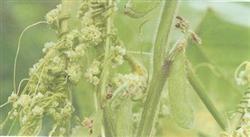
Dodder is also known as yellow rattan and tangled rice seedlings. It's a malignant weed. It harms a variety of crops and can cause the loss of soybean production, which is common in all parts of the country. (1) Morphology: the stem of soybean cocoon silk is yellow, orange-yellow or yellowish green, smooth, glabrous, linear, winding to the left on the host stem. Leaf blade reduced to membranous scales. Flowers.
2018-09-12 -
Application of herbicides in soybean field
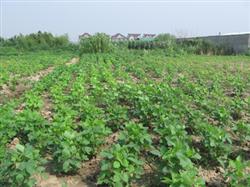
When the soybean field chooses to use herbicide varieties, it is safe and not easy to produce key points for crops, which is the first, and the second is to consider the control effect of weeds, that is, the control effect is better. Under the condition of good control effect, choose the varieties with lower drug cost as far as possible. There are two kinds of weeds in soybean field: Gramineae weeds and broad-leaved weeds.
2018-09-12 -
The harm of soybean heart borer and its control techniques
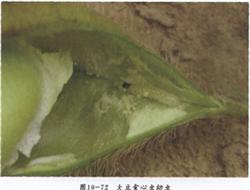
Soybean heart borer belongs to phosphoptera, small leaf moth family, alias soybean pod moth, bean pod worm, small red worm. When the larvae eat harmful beans into pods, the annual insect feeding rate is about 10%, and in severe cases, it can reach 30%, up to 80%, and affect the quality of soybeans and lower the grade. When the soybean heart borer comes out in the field.
2018-09-12 -
Control of three soybean diseases
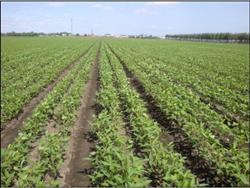
Soybean root rot: This disease can occur and cause damage throughout the whole growth period of soybeans, with a yield reduction of 25% to 75% or more. The protein content of the damaged seeds decreased obviously. The main symptom was dark brown spots at the base of the stem, which spread to the lower lateral branches to varying degrees, browning the pith of the infected stem and constricting the base of the petiole.
2018-09-12 -
The main reason of soybean flower and pod dropping
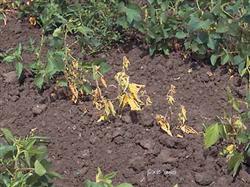
Soybean seedling blight is commonly known as "dead tree","damping-off" and "black root disease". In serious disease years, the death rate of plants in light disease fields is 5%~10%, and the death rate of plants in serious disease fields is more than 30%. Some fields even die completely, resulting in no yield. Field symptoms: soybean blight occurs only at seedling stage, seedling and young plant taproots and...
2018-09-12 -
What measures should be taken to achieve high yield of summer peanuts?
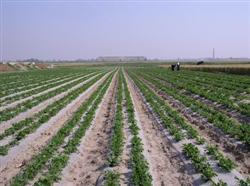
Summer peanut mostly refers to wheat stubble peanut, its growth period is 30-40 days shorter than that of spring peanut, and each growth period is shortened accordingly. The rapid growth in the early and middle stage and the low temperature in the later stage are disadvantageous to the development of pods. Therefore, the following measures should be taken. (1) early-maturing and high-yielding varieties were selected. (2) early broadcast in the rush time. Fight for the day in spring and time in summer.
2018-09-12 -
How to identify peanut root rot?
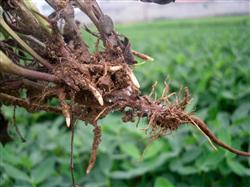
The incidence of peanut root rot is the most serious in the flowering and fruiting period. It mainly harms the root of peanut. After peanut infection, there were yellowish-brown infiltrating disease spots in the root neck, and then the disease gradually became dark brown. The main root of the diseased plant is wet-rotted, the root cortex turns brown and rotten, it is easy to peel off, there is no lateral root, or the lateral root is few and short, and the main root is like a rat tail.
2018-09-12 -
Simple Identification of Peanut Leaf Blight
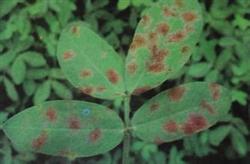
Peanut net spot, also called moire spot or reticulate spot, was first discovered in America in the mid-1940s. In the late 1970s, Liaoning Province of China reported the occurrence and damage of this disease for the first time. In recent years, the disease is more common in northern production areas of China, and the damage is serious. Generally, the yield is reduced by about 20%, and the serious yield is reduced by 4%.
2018-09-12 -
What is the principle of fertilizing peanuts?
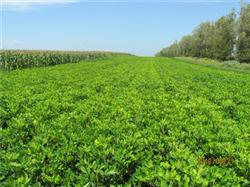
The main results are as follows: (1) Farm manure is the main and chemical fertilizer is the auxiliary. In China, peanuts are mostly planted in hilly areas, with thin soil layer and low fertility. Farm manure is mainly organic fertilizer, which is rich in nutrients, which can improve soil, fertilize and fertilize the soil for a long time. Chemical fertilizer is a quick-acting fertilizer, although it also contains the nutrients needed by peanuts, but with.
2018-09-12 -
Occurrence and control of peanut bacterial wilt
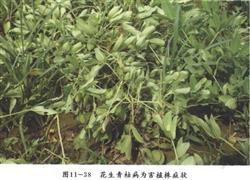
Peanut bacterial wilt, commonly known as "green disease", "dead seedling", "plague" and "dead vine", is an important disease in peanut producing areas. The incidence rate of general plots is 10%-25%, and the incidence of serious plots is more than 50%. Peanut bacterial wilt is a typical vascular disease, which can occur in the whole growth period of peanut.
2018-09-12 -
Skillful use of calcium Fertilizer to increase yield of Peanut
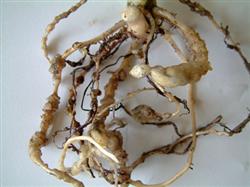
Peanut root-knot nematode disease is an important disease of peanuts, generally reducing yield by 2030%, serious cases up to 70,80%, or even no harvest. First, the symptom of this disease mainly harms the root, any part of peanut that can be buried (roots, pods, etc.) can be damaged by nematodes. Half a month after sowing, when the main root of peanut begins to grow, the line.
2018-09-12 -
What are the requirements of soil conditions for high yield of peanut
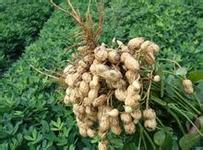
(1) the whole soil layer is deep. The whole soil layer of high-yield fields should be more than 50 centimeters. 99% of peanut roots are distributed within 50 cm, and the main roots are more than 1 meter deep. Therefore, the depth of soil is very important for the growth and development of peanut roots. (2) the tillage layer is active. Thickness in the range of 30 cm is Xuan live fertile tillage layer, also.
2018-09-12 -
How to prevent soybean mosaic disease
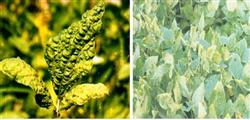
Suihua City, Heilongjiang Province is the main soybean producing area, with an area of nearly 300000 hectares planted all the year round. In recent years。 The occurrence of soybean mosaic disease has a trend of increasing year by year, most plots have occurred, the field disease plant rate is generally about 4.8%, serious up to more than 20%, soybean grain brown (black) spot grain rate is more than 10%.
2018-09-12 -
Mung bean summer direct seeding technology
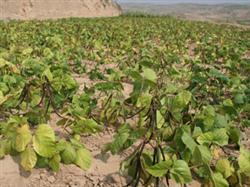
When mung bean seedlings reach 2 leaves and 1 heart, pimple seedlings should be removed. When 4 leaves are fixed, the plant spacing is 13 to 16 cm, the row spacing is about 40 cm, leaving 1 to 15000 seedlings per mu, and those who sow late can stay at most 20, 000 plants. Mung bean from emergence to flowering and sealing line, to adhere to diligent ploughing and weeding, generally not less than 4 times, mid-ploughing depth from shallow.
2018-09-12 -
Apply sufficient base fertilizer to mung bean
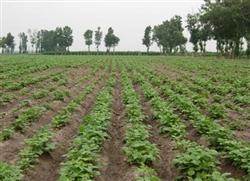
Although mung bean rhizobium has the ability of nitrogen fixation, the application of farm fertilizer and phosphorus and potassium fertilizer can obviously increase the yield. Before sowing, 2500 kg of farm manure, 20 kg of phosphate fertilizer and 1 kg of biological potash fertilizer were applied as base fertilizer per mu. If the field that is too late to apply base fertilizer, in the early stage of growth, that is, branching, the first flowering stage, the application of three-yuan compound fertilizer 7.5 thousand per mu.
2018-09-12 -
Mung bean seedling management seed germination should not be too long
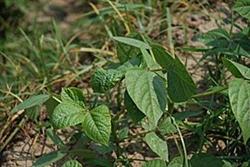
In case the seedlings are weak. Excessive humidity is one of the important causes of stunting disease, so the appropriate humidity should be controlled at seedling stage. Irrigation before sowing should be appropriate, too large, high humidity, and lower soil temperature; too small, the seedling stage to increase the number of watering, not only labor-consuming, but also increase humidity. In the early stage of seedling emergence, fine soil can be sprinkled on the bed.
2018-09-12 -
Control methods of mung bean root rot
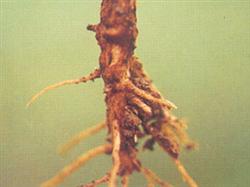
(1) the heart leaf turns yellow at the beginning of the symptom. If the root system is pulled out, it can be seen that the lower part of the stem and the upper part of the main root are dark brown and slightly depressed. When the stem is cut open, the vascular bundle turns dark brown. When most of the roots rot, the plants wither and die. (2) the condition of the disease is low-lying, high soil moisture and ground temperature.
2018-09-12 -
Mung bean has a good way to control insect pests in winter.
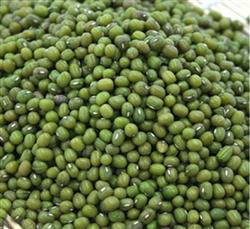
Mung bean, also known as green adzuki bean, gets its name because of its green color. It has been cultivated in China for more than 2000 years. Because of its rich nutrition and many uses, Li Shizhen called it "the best dish". But although it is nutritious and popular, the storage of mung beans is a headache. Because it was supposed to be intact.
2018-09-12 -
Cultivation techniques of mung bean
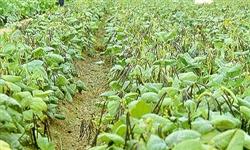
(1) although mung bean rhizobium has the ability of nitrogen fixation, the application of farm manure and phosphorus and potassium fertilizer can obviously increase the yield. The application of farm manure can be given to people once before sowing, and ploughed and turned over after application. If it is too late to apply base fertilizer, it is necessary to apply a certain amount of nitrogen and phosphate fertilizer in the early stage of growth, that is, branching and flowering.
2018-09-12 -
High-yield cultivation techniques of mung bean
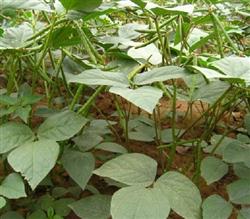
Mung bean is a high-protein, low-fat, medium starch, medicine and food homologous crop, is an ideal health food for people, and has high economic utilization value. The most remarkable characteristics of mung bean planting are long sowing period, short growth period, drought and barren tolerance, strong adaptability, wide cultivation range, nitrogen fixation ability, good stubble, but avoid continuous cropping.
2018-09-12
